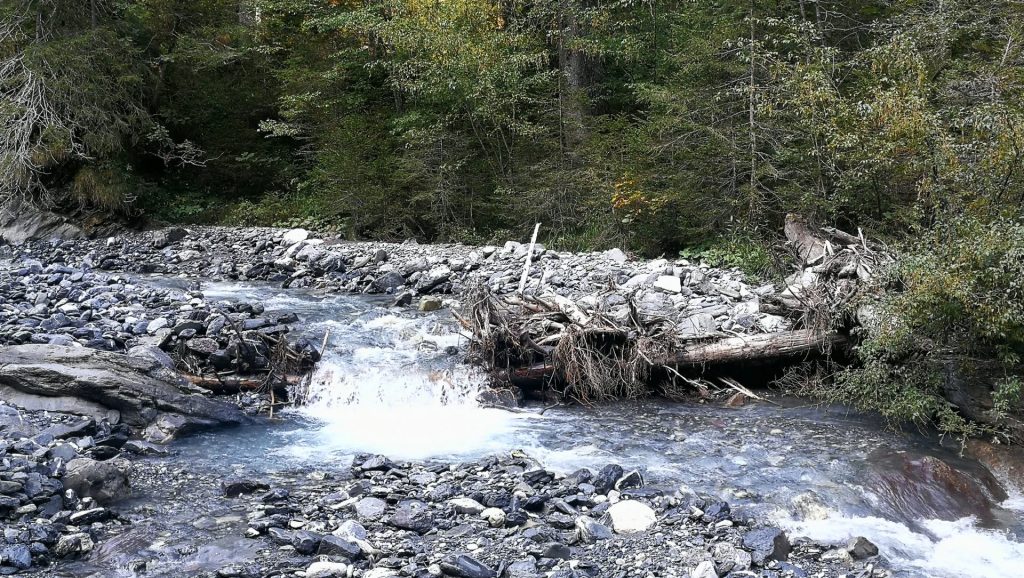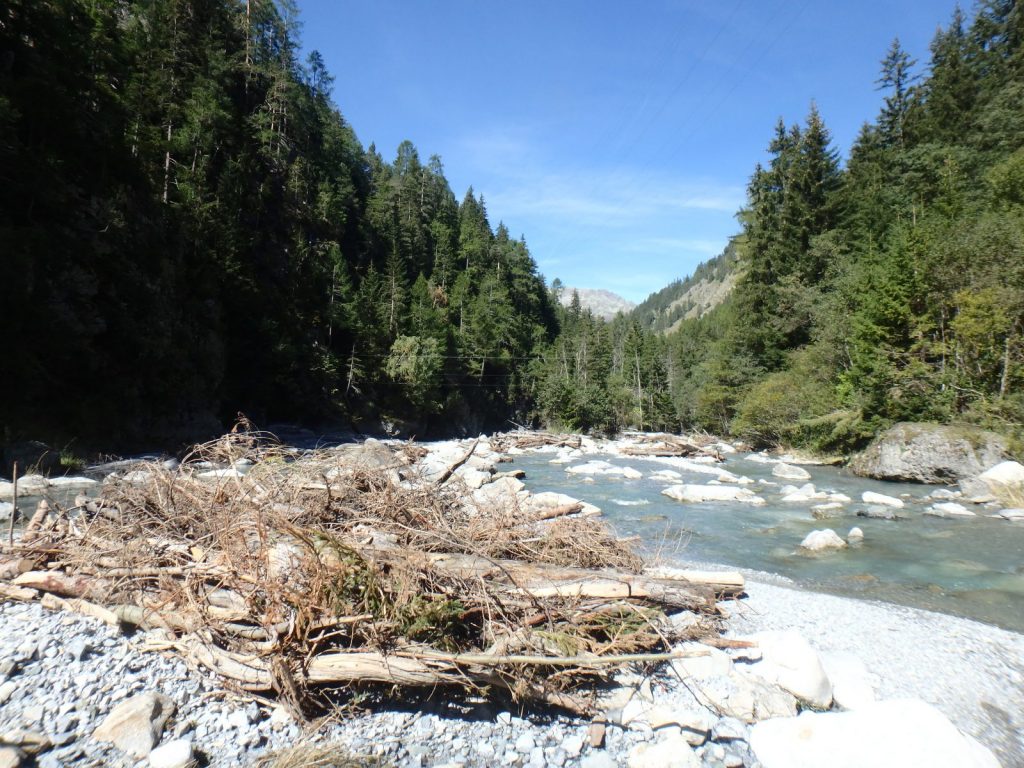2023-2024: NaviSedWood Wood and sediment sources and regimes in alpine proglacial streams: insights from the Upper Navisence catchment (VS, CH)
Center for Climate Impact and Action (CLIMACT) Starting Grant, EPFL-UNIL
The morphodynamics of alpine streams is driven by the interplay between water, sediment and large wood, and stream morphology. For a given hydrologic forcing, the dynamics of sediment and wood in a catchment influence flood hazard. Therefore, monitoring their transport is essential to river management. However, measuring and quantifying sediment and wood regimes remain challenging and data is scarce, especially in proglacial environments. This project aims at setting up a long-term monitoring framework for a quantitative assessment of sediment and wood transport regimes in a mountain catchment that is experiencing notable glacier retreat. Equipment and survey frameworks will be tested and established by an EPFL-UNIL team with multidisciplinary and complementary expertise. The information required to reconstruct the historical wood and sediment supply regimes and to analyse their possible changes will be gathered by combining retro-analyses of available archived data, field surveys, and remote sensing methods. Expected results will foster our understanding of the hydro-geomorphic responses to climate change of streams in proglacial, partially-forested areas. Therefore, they will provide better knowledge to design and implement flood-hazard mitigation strategies and environmental resource management in mountain areas.
2022: Cascading hydrogeomorphic processes and hazards in mountain catchments under environmental changes
University of Lausanne – University of Padua Joint project (https://wp.unil.ch/cashaz/)
Mass movements such as landslides and debris flows, and fluvial processes (i.e., floods) may naturally act together or interact in a given space or time. The physical response of mountain catchments concerning these hydrogeomorphic processes is hardly predictable due to their complex nature, the interplay between different controlling factors, and the rarity of these events. These cascading processes will likely be exacerbated due to climate and environmental changes. Addressing the risks resulting from the combination of multiple processes and hazards faces enormous challenges primarily from a still incomplete process interaction understanding. In addition, expertise is scattered across disciplines (geomorphology, geology, hydrology) and beyond (civil engineering, social science), limiting the potential to develop and its ability to influence policy.
This project aims to identify the current gaps in knowledge regarding cascade hydrogeomorphic hazards and risks and to suggest new frameworks to study the complex feedback and interactions between hillslopes and fluvial processes. The goal is to boost and encourage the exchange of ideas, cooperation in research, and the crossing of disciplinary boundaries, bringing together academics (early-stage researchers and senior scientists), practitioners, and stakeholders.
2020-Present: Towards a new understanding of fluvial ecosystems: integrating wood regime across multiple scales
Financed by the Swiss National Sciences Foundation (SNSF) Eccellenza Professorial Fellowship
The health of a river depends on its water, sediment and instream wood (i.e., downed trees, trunks, rootwads and branches) regimes; however, compared to water and sediment regimes, the importance of the instream wood regime is rarely recognized.
The overall goal of this project is to improve the understanding of fluvial ecosystem functioning by integrating the instream wood regime across multiple disciplines and spatial and temporal scales.

2020-Present: Quantifying riverine flood risk & habitat diversity related to large in-stream wood (TIMBER)
Financed by the Natural Environment Research Council (NERC) International partnerships Grant
This project brings together the collective expertise of academic and practitioner partners to drive a step change in the way in which we monitor, predict and manage the changing benefits and risks associated with wood in rivers.
Info
2017-Present: Long-term monitoring of bio-morphodynamics in the Spöl River (Swiss National Park)
Supported by the Swiss Academy of Sciences and the Swiss National Park
The aim of this project is to improve the understanding of regulated environmental flows effects on river morphodynamics, vegetation and instream wood dynamics in the Spöl River.

